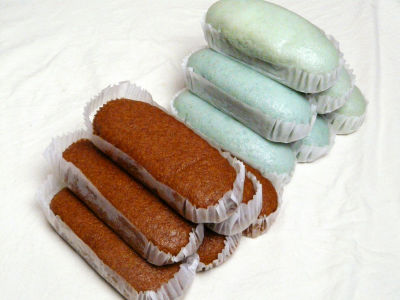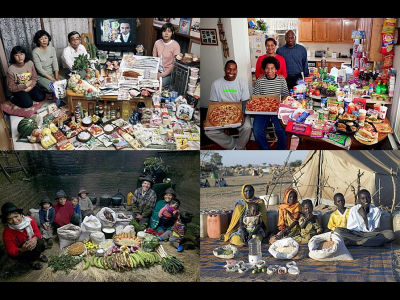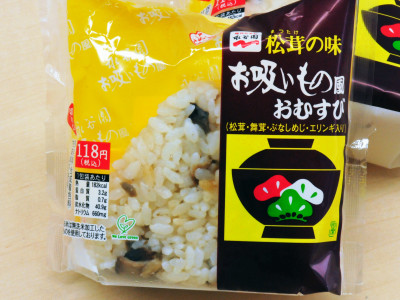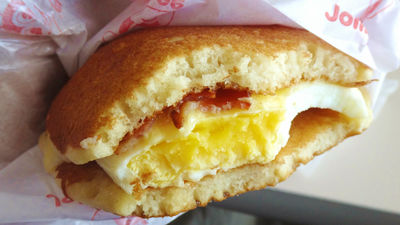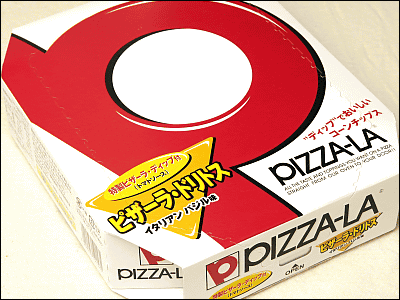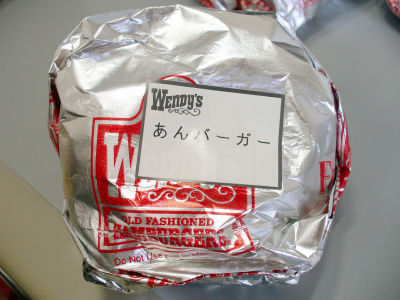I tried eating up Sevilla's Hawaiian food for about 2,000 yen in Hawaii saying 'Everything is expensive' Report

Although it is a longing place of everyone, Hawaii, when you eat at a restaurant, the price of 3000 yen per person exists as a big wall. There is a way to go to
Arrive at Seven-Eleven in Hawaii. The appearance is the same as Japan's Seven-Eleven.
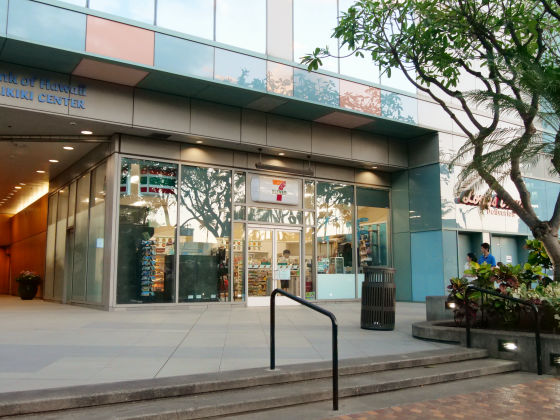
The first thing I checked inside was a refrigerated display shelf.

Besides snacks such as sandwiches here ...

Discover Vietnamese food such as Pho. In Japan, udon and soba are lined up, but in Vietnam where there are many Vietnamese restaurants, it seems that pho is offered.
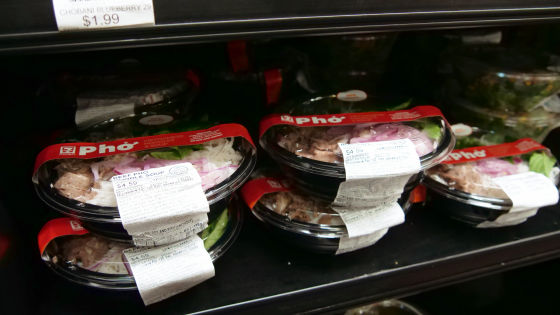
Japanese-style menus such as sushi rolls and rice cakes.
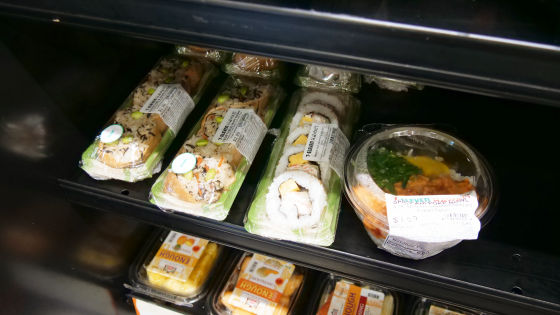
However, there was also a menu called 'spicy ahi inari' ($ 3.09 / approx. 350 yen) that you would rarely see in Japan. Ahi is a tuna, but I bought it because I wanted to taste the combination of the mystery of Inari x Spicy.
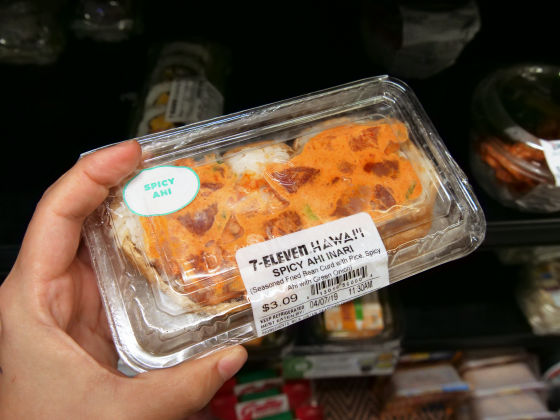
In addition, chopsticks version is also displayed, and a fried soba version ($ 2.99 / approx. 340 yen) of a traditional Hawaiian dish called “Carapok” ($ 3.99 / approx. 450 yen) and “

We also found the classic Loco Moco ($ 4.99 / about 560 yen). However, Loco Moco is often seen in Japan, and it is through that it is a little expensive.
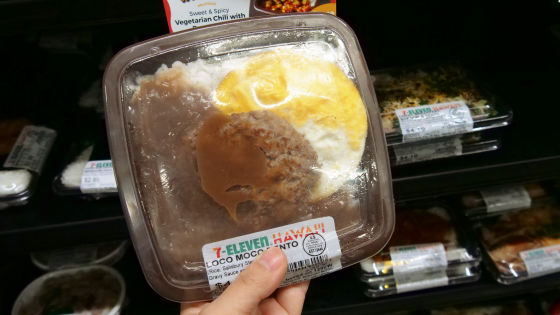
Meat & rice lunch series such as 'fried chicken lunch', 'garlic chicken lunch' and 'teriyaki chicken lunch' (all $ 4.39 / about 490 yen). The word BENTO seems to be used as it is in Hawaii.
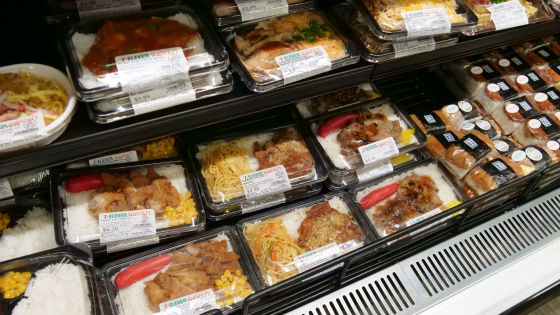
Spam end is about 1.5 dollars (approximately 170 yen).
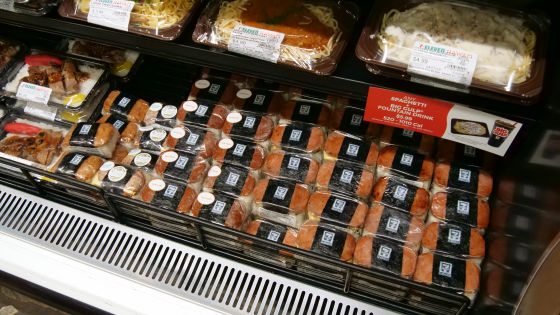
'Chicken

In addition, I found Nachos while crawling around the store, but next to the Nachos pack, a machine with 'FREE chili & cheese (free chili and cheese)' was placed, and I saw it twice. I received a light cultural shock that Hawaiian chili and cheese are treated the same as soy sauce and gari.
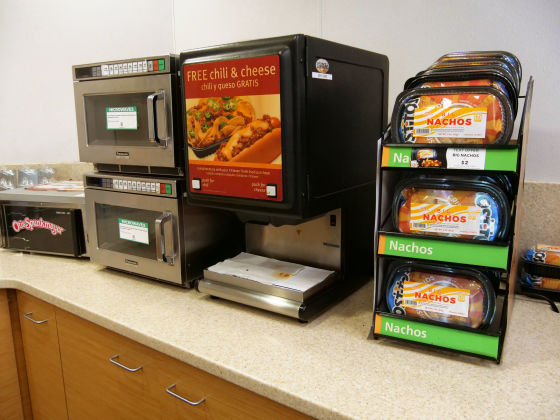
It is not a Hawaiian dish, but I bought Nachos ($ 2 / approx. 220 yen) and opened it on the spot.

Place the Nachos pack in the receptacle of the machine in the manner of the juice bar, press the button and the chili will fall on the Push-Push and Nachos.
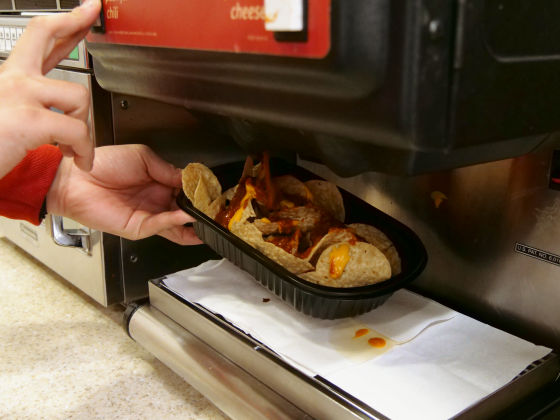
You can see how the cheese actually sticks to Nachos from the following movie. However, the cheese did not have the feeling that the momentum was so weak that the specification was low or the amount was low and 'Push ......... Push ...', and cheese was filled only overflowing.
In the freezer ...
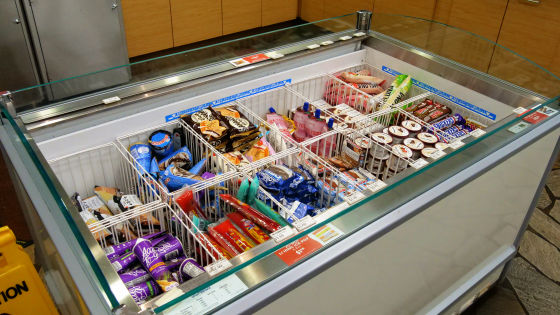
In addition to M & M's and Oreo's cookie sand, ice cream named “
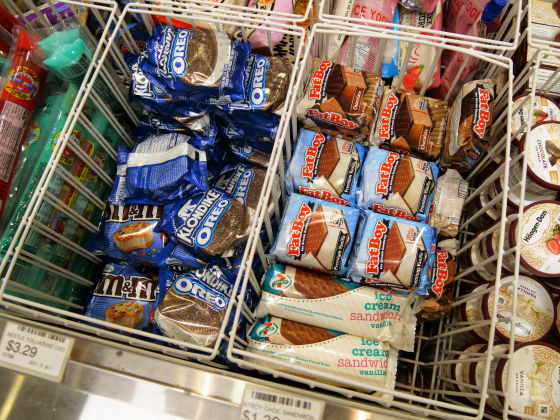
There was also the familiar Snickers ice cream version.

What is lined up on this shelf ...
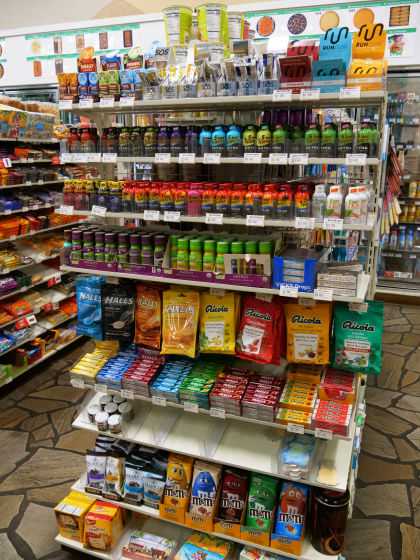
Nourishing food. The '
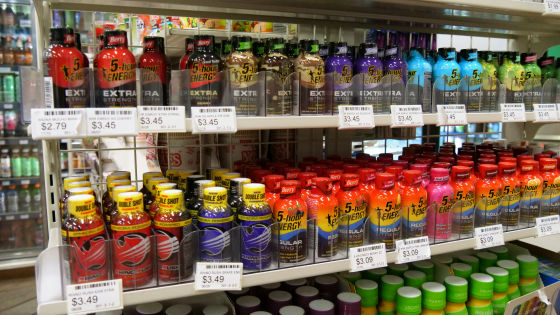
Furthermore on the shelf of instant food ...
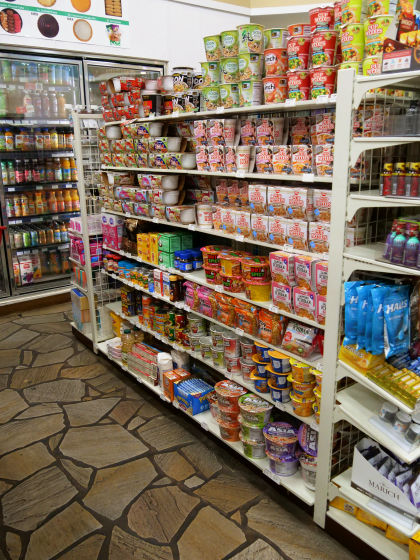
Other than cup noodle 'shrimp' ......
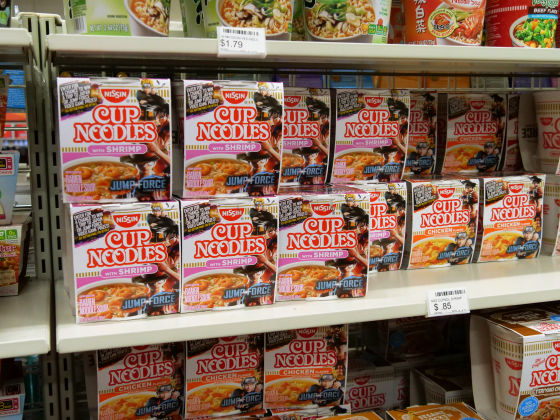
Sapporo Ichiban 'Ebi'
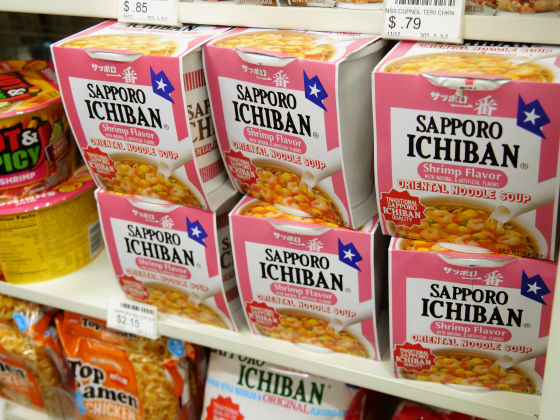
Maru's taste and so on.

There was also an American taste '
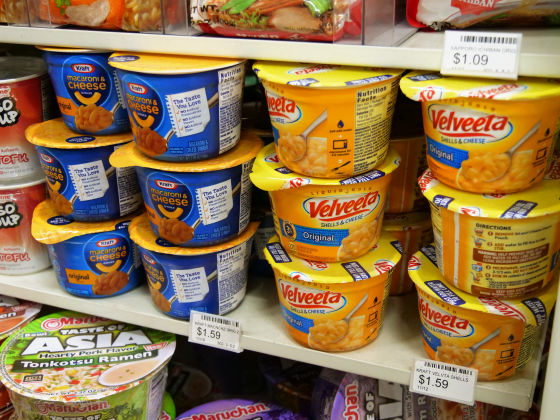
In addition, the shelves are filled with colorful Gummies that make us feel American.
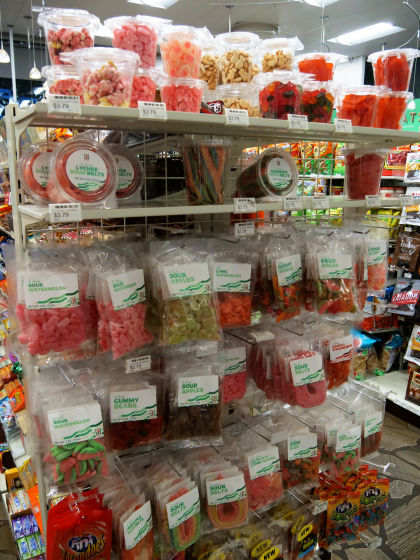
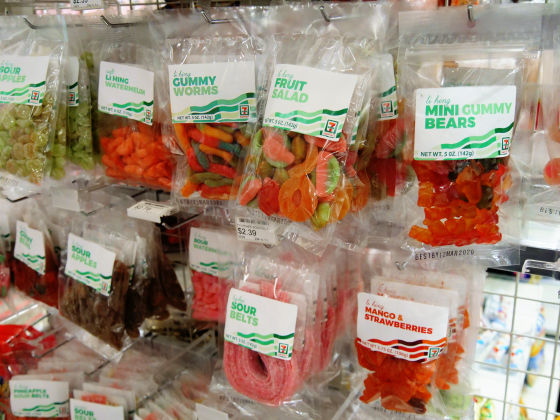
Shelf filled with mixed nuts.
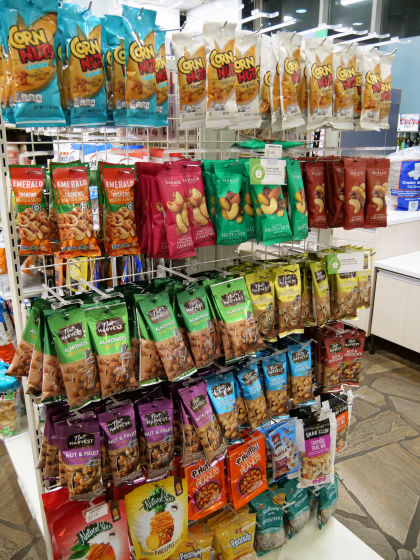
On the jerky shelf ...
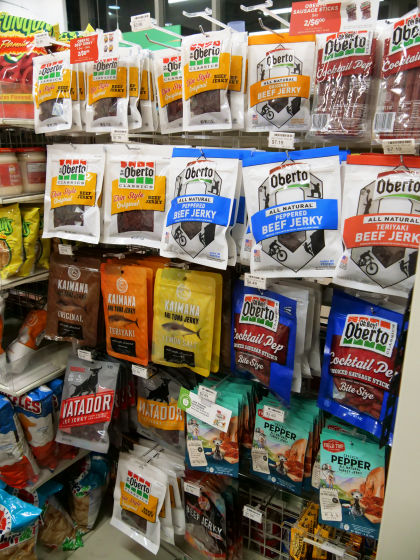
Not only beef but also tuna jerky.
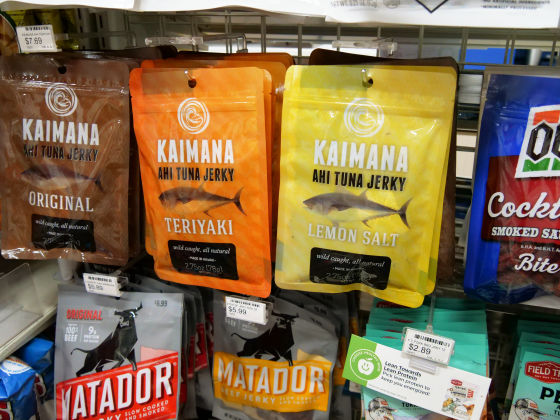
There are also dried fruits on the shelves of the snacks, as well as Japanese-style items such as 'UME SEED', 'SAKIIKA', 'ARARE' and 'BORO'.
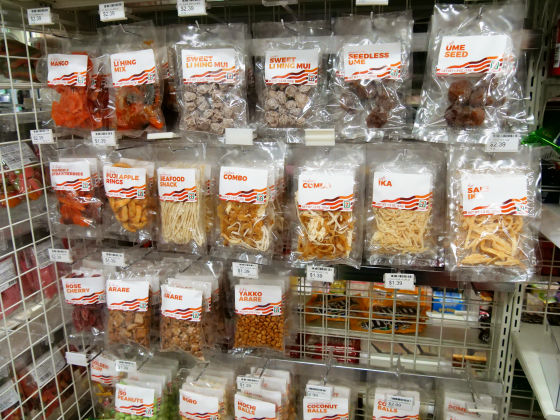
Pringles is a selection of original cheddar cheese, sour cream and iron plate.
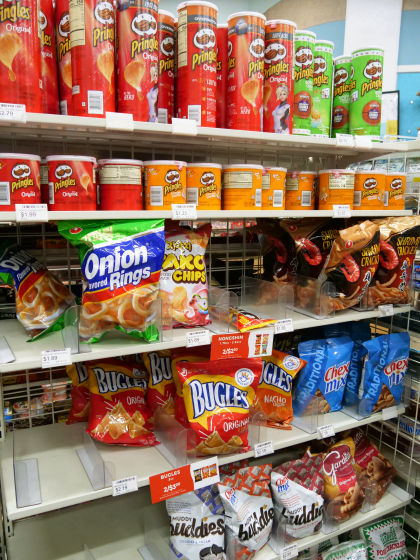
Sweets sweets shelf.
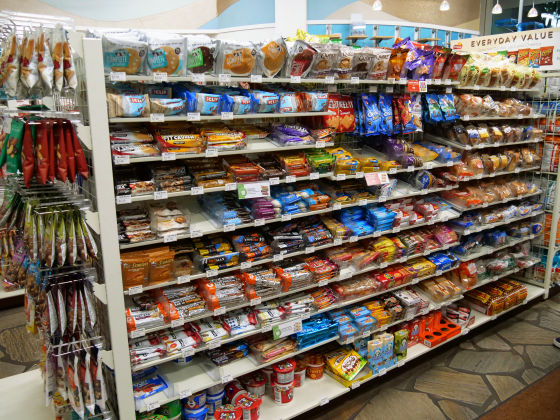
In this area, there were sweets that I had seen in Japan such as '
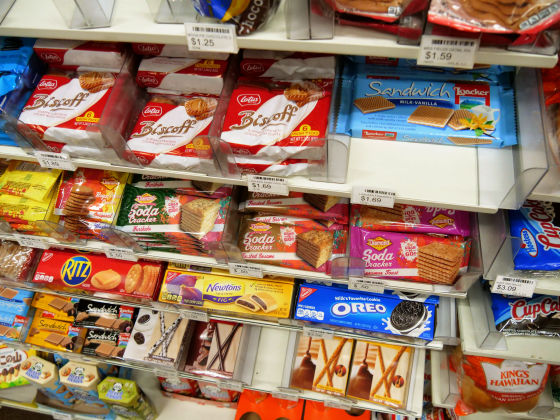
In Japan, it may be the difference that the
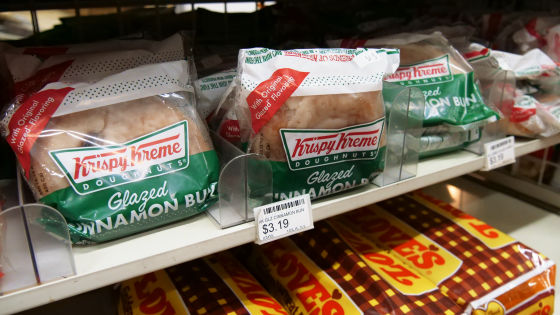
The coffee corner is more abundant than Japan.
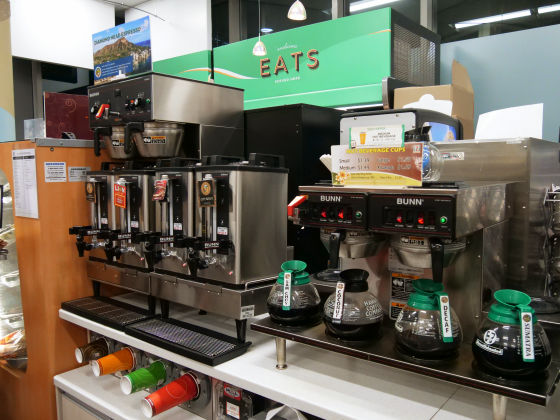
You can choose from four types of coffee.
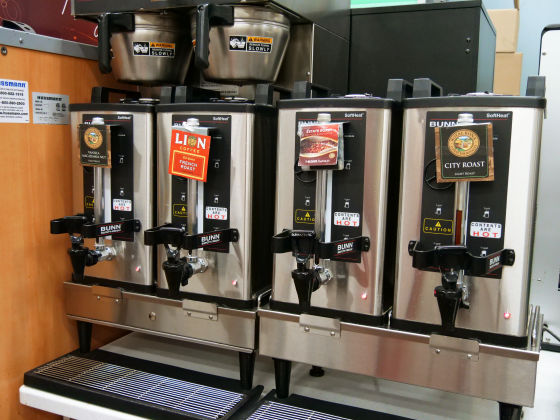
Also a colorful soft cream machine.
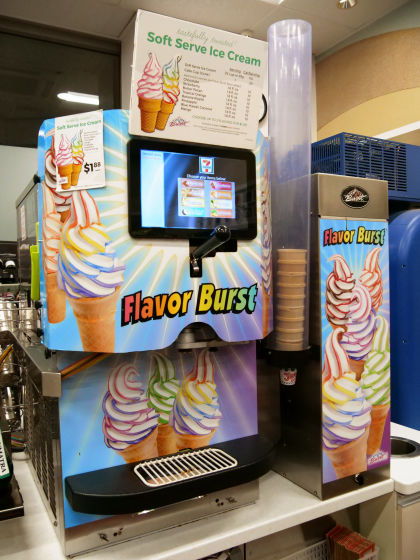
You can choose up to three flavors for $ 1.88 (about 210 yen).
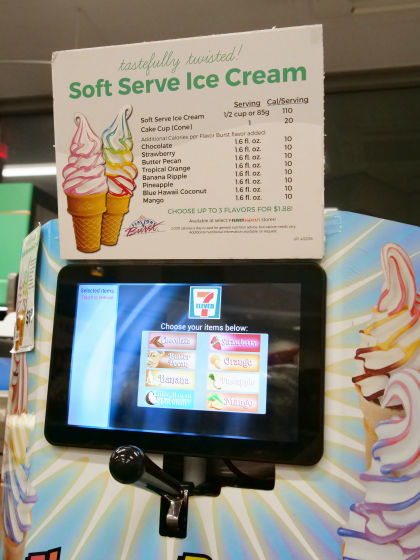
Two milkshake machines cost $ 5 (approximately 560 yen)

Besides confectionery bread and donuts ......
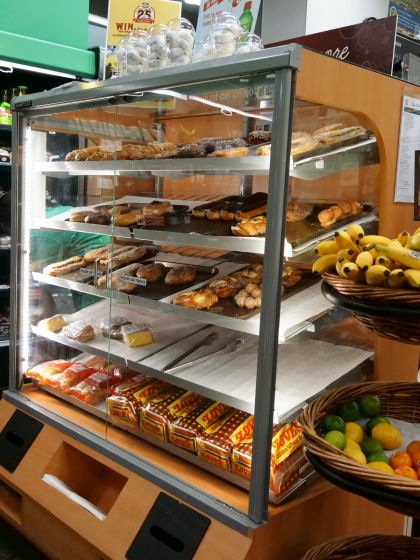
A meat manga was also placed in front of the cash register.
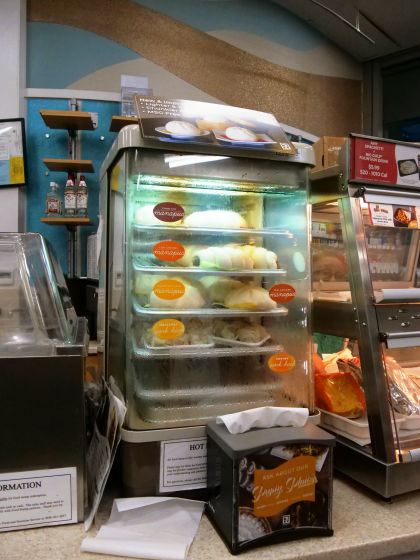
So, six items have been purchased at Seven-Eleven.
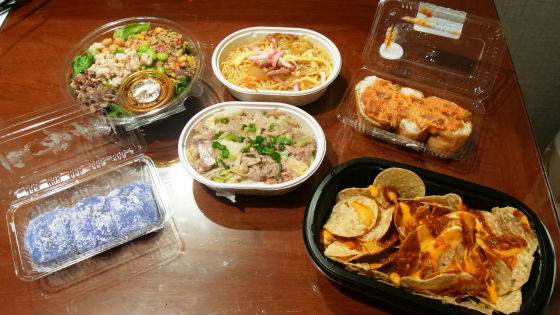
First of all, from Kalpok.
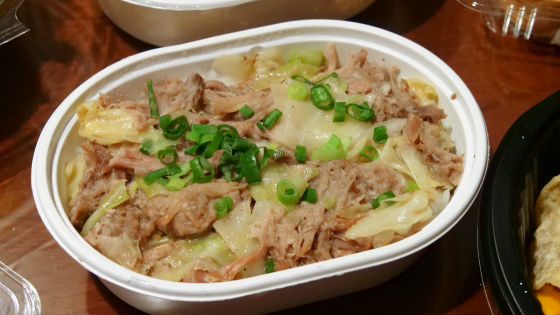
The size is slightly larger than the 143.6 mm total length iPhone XS, and it can be said that it is a smaller size for Japanese people as it is a big American.
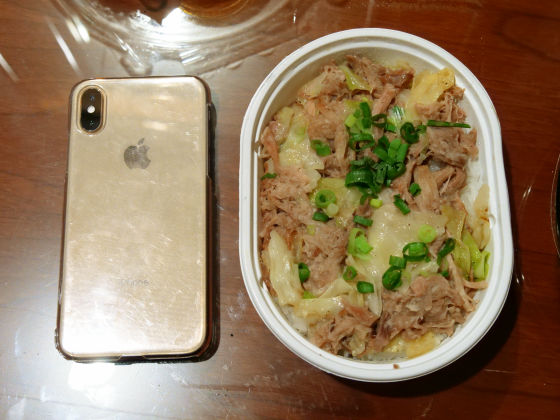
Pork, cabbage and green onion are on the rice.

When I tried eating it, the soft-boiled pork was juicy, and the white rice was entwined with the fat and taste of the pork, and the rice was rolled. Kalapoke is a dish that digs a hole in the ground and steams the pork wrapped in banana peel, but it has a strong smell of smoke. It's easy to eat, and while you're thinking, 'I want this to be sold in Japan,' I have a quick meal.
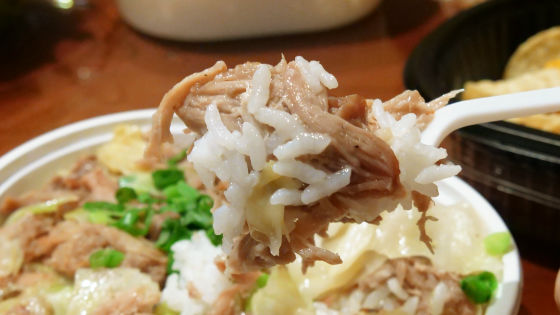
Yakisoba version Saimin. When it turns red, it contains rolls, spam, gold thread eggs and so on.
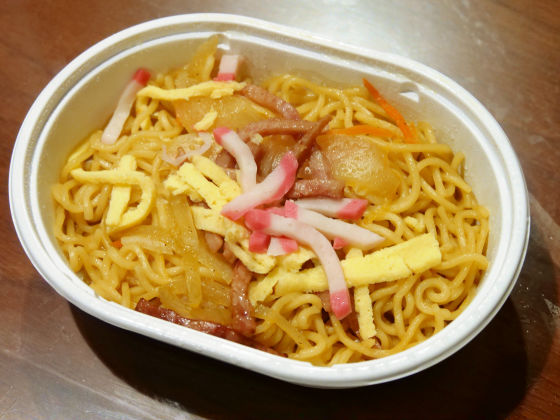
Yakisoba flavored with sashimi is a taste of Japanese style that seems to be likely to be in Okinawan cuisine. It's salty, like instant food, and it's just salty, so I don't think it's 'tasteless', so I've eaten up too.

Next is Spicy Ahi Inari.

The sauce is sweet and sweet, but it has a peppery finish and it's a refreshing finish, and the strength of the sauce's punch makes the tuna's presence slightly thinner. Although the sushi itself is sweet as well, the overall finish is sweet, but the allegations of peppers are so strong that the sweetness and hotness do not come together and merge separately ... but a mysterious finish. It is not bad at all, and this is delicious, but it was a unique view of the world.
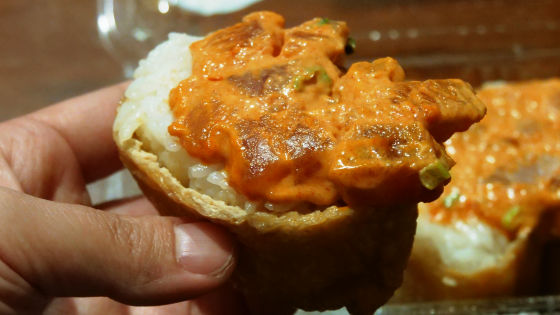
I also try Nachos made at the shop.
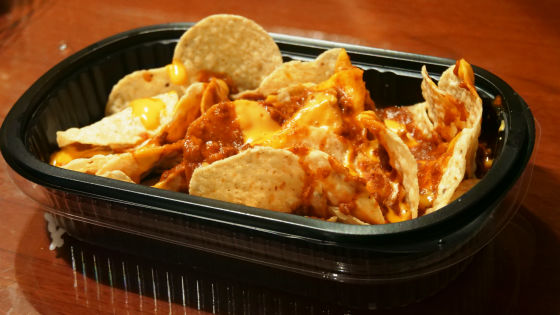
It was a cheese that did not have much momentum, but I spent a lot of time over it.
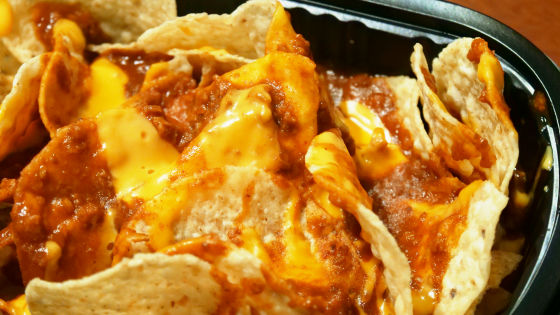
In the mouth, the claim that 'America !!!' bursts up, it is a solid taste and it is an item that you want to eat with Cola while watching a movie. The chilli and cheese are so warm that it is good to have a 'fresh' feel. It's not a Hawaiian dish, but it's a wild thing that you can't taste in Japan, so you should never try it and regret it.
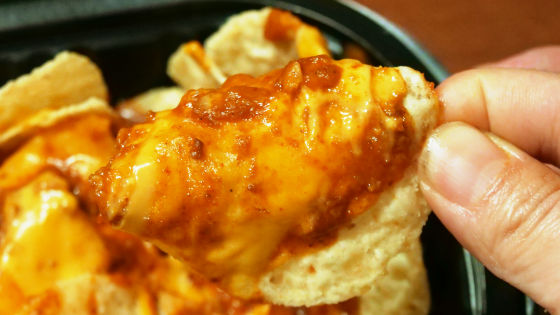
The wall I was looking for for dinner at Seven-Eleven is 'There is only meat and rice ...'. As there is no rich vegetable menu as in Japan, and there is no concept of “full vegetables”, this time I bought a salad called “Quinua Boost Bowl” ($ 5.69 / approx. ¥ 640). There is no mini-sized salad like Japan, and it is huge enough to cover the main part.
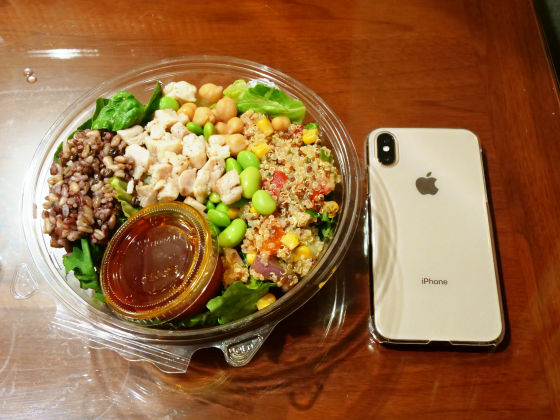
Other than Quinoa ......
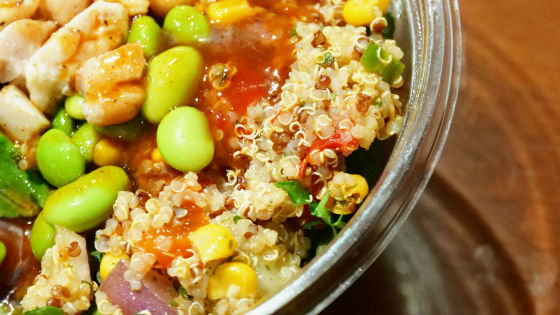
Black rice

Chicken and beans. It is a salad that can also take carbohydrates and proteins.
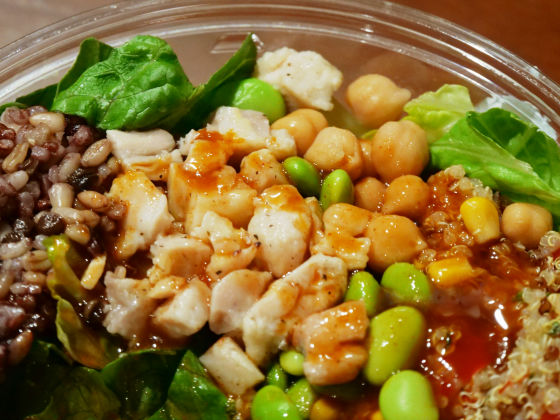
The dressing is a slightly sweet Chinese-style dressing that smells of sesame oil. Even if you eat a large amount, it's a voluminous thing that you can not eat it. If I eat it alone, it seems that my stomach is quite swollen.
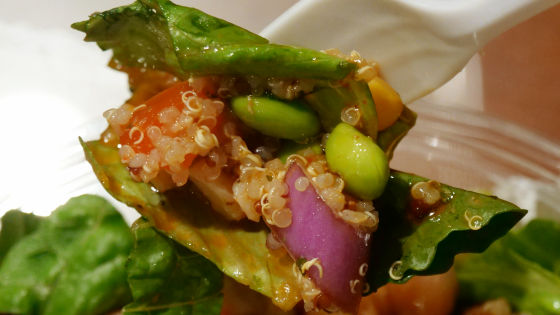
Furthermore, I discovered something called 'peanut butter mochi' ($ 2.79 / approximately 310 yen) next to the cash register. In Hawaii, Daifuku of Japan seems to have evolved independently as 'MOCHI'.
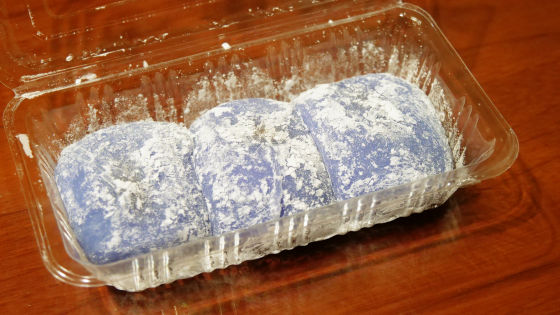
I tried eating a bright purple mochi ...

Peanut butter from the inside. The rice cake is soft and has a soft and fluffy finish, but when it goes forward, peanut butter appears stronger than rice cake. As you head toward the center, it has a structure that increases the sense of nety, and because peanut butter is not so sweet, the impression is quite different from that of Daifuku in Japan. By eating this peanut butter mochi 'Well, Japan's Daifuku was making the texture of nety / soft feeling by putting anko and cream inside' 'And by sweetening anko more than mochi It was possible to look back on Japanese food, and to gain an experience of 'being aware of the goodness of one's own country by touching different cultures' through mochi.
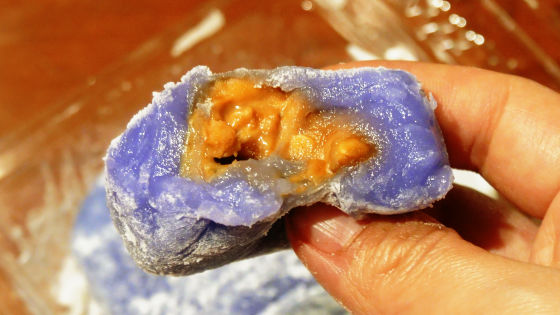
So, Spicy Ahi Inari ($ 3.09 / approx. 350 yen), Nachos ($ 2 / approx. 220 yen), Quinoa Boost Bowl ($ 5.69 / approx. 640 yen), Carapok ($ 3.99 / approx. 450 yen) A total of $ 20.44 (approximately 2300 yen) with fried buckwheat noodles version of thymine ($ 2.99 / approximately 340 yen) and peanut butter mochi ($ 2.79 / approximately 310 yen). The food at the restaurant is huge in Hawaii, and the Seven-Eleven food is the size and taste for Japanese people. As it was about 2 people in this amount, it is quite ant as an option to enjoy exoticism firmly for 1000 yen per person.
Related Posts:
